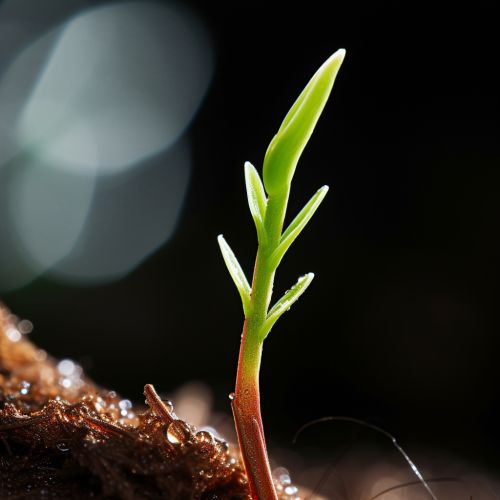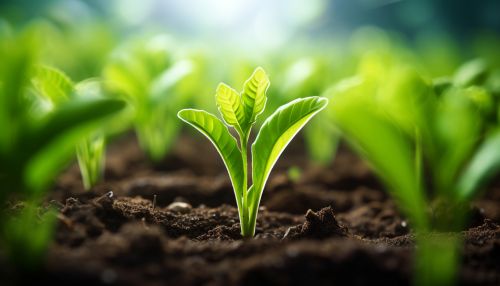Auxins
Introduction
Auxins are a class of plant hormones, or more specifically, a group of signaling molecules, that play a crucial role in the coordination of many growth and behavioral processes in a plant's life cycle. They are primarily involved in cell elongation, which occurs in the apical meristem of the plant. The term "auxin" is derived from the Greek word "auxein", which means "to grow".
Discovery
The discovery of auxins dates back to the late 19th century when Charles Darwin and his son Francis conducted experiments on phototropism - the movement of plants towards light. They observed that light is perceived by the tip of the plant, and this signal is then transmitted down to the elongating regions of the shoot. It was not until the 1930s that the substance responsible for this growth response was isolated by Frits Went and named "auxin".
Types of Auxins
There are several types of auxins. The most well-known and widely studied is indole-3-acetic acid (IAA), which is considered the primary natural auxin. Other types of auxins include 4-Chloroindole-3-acetic acid (4-Cl-IAA), phenylacetic acid (PAA), and indole-3-butyric acid (IBA). Synthetic auxins, such as 2,4-dichlorophenoxyacetic acid (2,4-D) and naphthaleneacetic acid (NAA), are also used extensively in agriculture and horticulture.
Biosynthesis and Metabolism
The biosynthesis of auxins, particularly IAA, has been a subject of extensive research. It is now known that IAA is synthesized from the amino acid tryptophan through several pathways, including the tryptamine, indole-3-pyruvic acid, and indole-3-acetonitrile pathways. The metabolism of auxins involves conjugation to amino acids, sugars, or peptides, and oxidation by the enzyme auxin oxidase.
Transport
Auxins are unique among plant hormones due to their polar transport. This means that they are transported in a specific direction within the plant. This polar auxin transport is facilitated by specific carrier proteins located in the plasma membrane of plant cells. These carriers include the PIN-formed (PIN) proteins, which are responsible for the efflux (outward transport) of auxins, and the AUX1/LAX proteins, which mediate the influx (inward transport) of auxins.
Functions
Auxins have a wide range of functions in plants. They regulate cell elongation, apical dominance, root initiation, fruit development, and tropic responses such as phototropism and gravitropism. They also play a role in the process of vascular differentiation, which is the formation of xylem and phloem tissues in plants.
Role in Agriculture and Horticulture
Auxins have been widely used in agriculture and horticulture due to their ability to stimulate plant growth. They are used as rooting agents to promote root growth in cuttings, as herbicides to control weed growth, and as fruit thinning agents to improve the size and quality of fruits.
See Also


